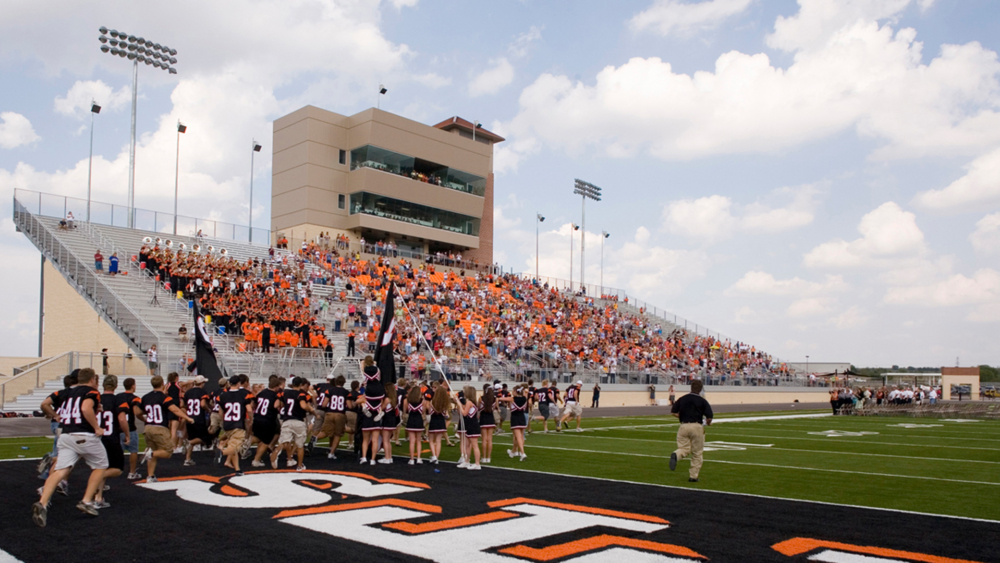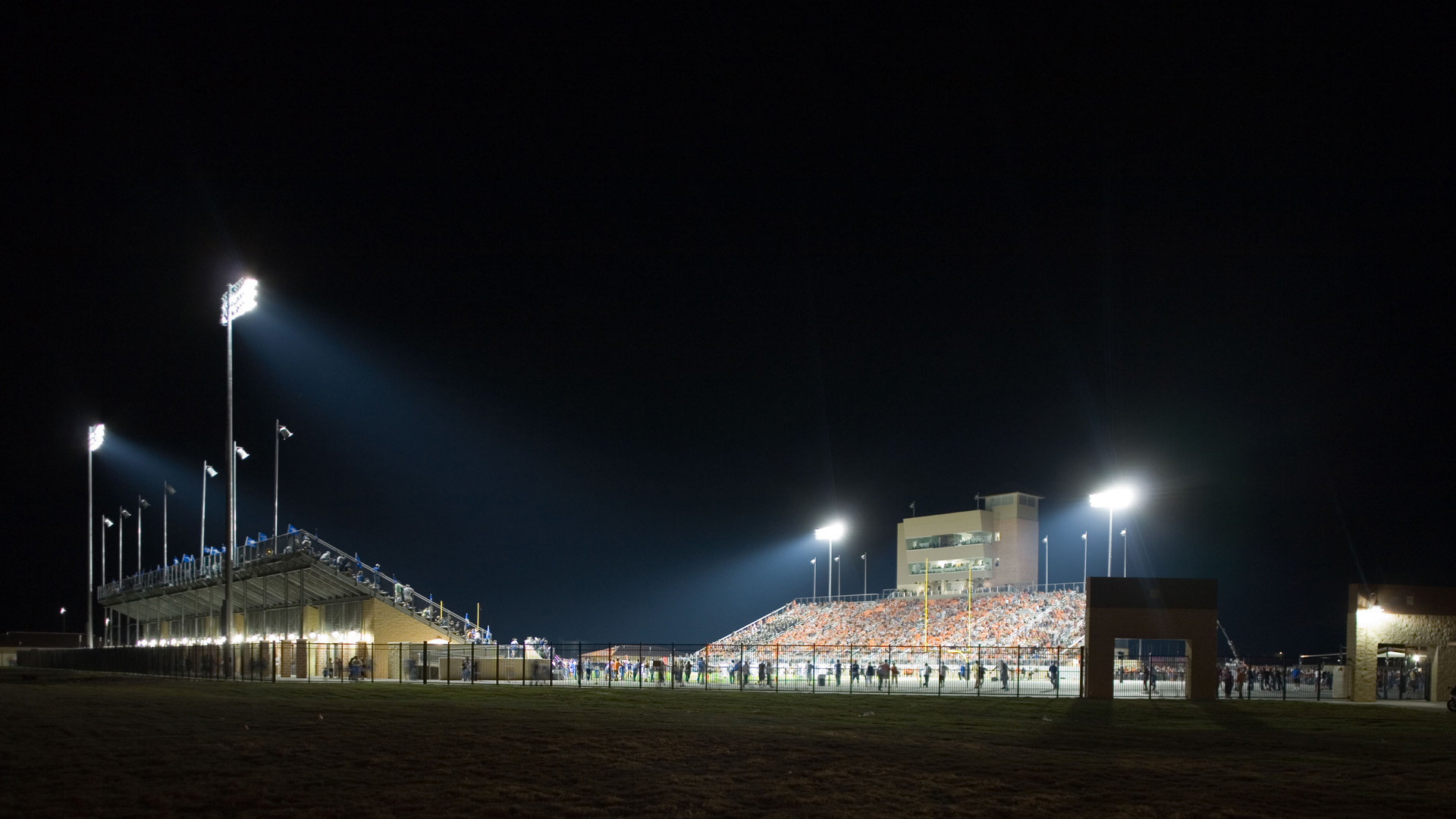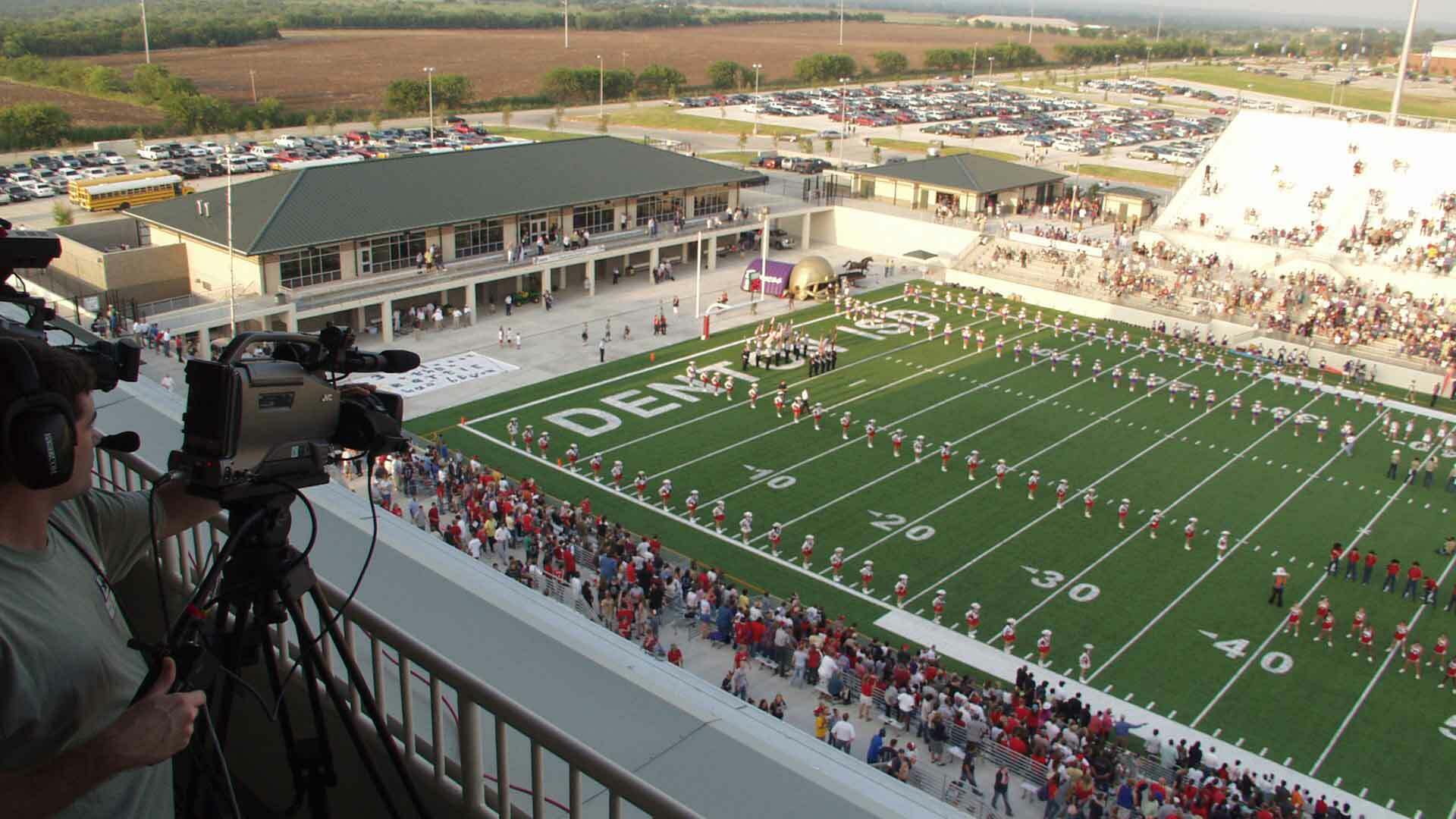
Home Field Advantage
Sports venues are unique building types that can contribute to the success of sports programs.In recent years, collegiate and professional sports venues have been working to create more fan friendly settings that adapt to market preferences and demands. Many minor league ballparks, seeking to create new ways to increase attendance, have developed innovative new amenities to entice fans to attend games. The general premise of these innovations is to offer fans options for attending games with friends and family. Today, fans have many options for group attendance: seating boxes, party decks, loge seating, and berm seating. In addition, collegiate and professional sports venues are taking into consideration branding and advertising components, in order to not only increase team loyalty, but also to build additional revenue. It isn't solely about the 'on field' experience anymore. Most high school sports venues, however, seem to rely on concepts developed for the less interactive past. The bleacher seating design style might have seat backs offered in an alumni bleacher section, but there is little else in the realm of market choice for the consumer. As the architecture and scale of high school sports venues continues to grow, one has to wonder when we will see the non-traditional spaces of collegiate and professional sports venues trickle into the design of high school facilities.Fans play a big role in the vibrancy of a stadium. It is no secret that there is a 'home team advantage' which can contribute to the success of a team's season. If having an engaged fan base contributes to the 'home field advantage,' then creating venues that support fan engagement could benefit a program's 'on field' success.
But how does a building contribute to a fan's passion about a game and support for a team? Creating an engaging, active, and intimate environment begins with moving your fans close to the action. One way to remove the distance between fans and the field is to consider removing the track from inside the stadium. With the track removed, spectators are closer, but it is important to consider the space that will then be needed on the sideline for the team, their equipment, the cheerleaders, and the band to stage before performing. With these careful considerations, a stadium designed to move spectators inward, can be a great solution.

There are additional ways to connect the crowd to the game in other stadium areas. Placement of TV monitors above the concessions can allow fans to keep track of the game but are no substitute for the live sports action and the pull of a loud excited crowd. Therefore, concession lines can be organized to permit views back to the field to keep fans engaged in the game. It is also important to create movement to various designated spaces as well. Offering food is a tried and true way to do so. Perhaps an open air plaza is a good place to grill hamburgers or fajitas. The smell alone will pull fans to those spaces. A cart and kiosk program can be used to supplement the point of sale capability of the concessions, and provide additional concessions for other unique spaces. Today, it is essential to plan water and power sources from the beginning so that there are many options for temporary concessions in various spaces.
Offering a range of standing and seating options for both individuals and groups can contribute to the vibrancy within the stadium. The end zones can be used to efficiently provide additional seating for home or visiting fans. Berm seating spaces in the end zones can be organized to supplement the seating capacity, and additional spacing for carts or kiosks should be created to provide concessions for these areas. Most fans seem to be more engaged in a game when they attend an event with friends. Why not offer that option as you plan your venue? Providing unique vantage points from which to view the game can contribute to the feel of excitement. The concourse can be designed to be kept open into the seating bowl which will provide standing room areas. The addition of a drink rail behind the seating along the concourse can provide a unique standing room position. Plazas and stairs can offer interesting game day places for standing with groups of friends to watch the action. Party decks can increase seating capacity and also provide a special area for alumni, community or corporate groups who want to attend a game together. Would an air conditioned club space on a warm Friday night appeal to parents or grandparents attending a game? Suites at the press level might be inappropriate for a high school venue, but an air conditioned 'club' space offering a catered meal with outdoor seats might fill a local market niche. These unique spaces can be used for other events. A club space could be an assembly room for staff development, community meetings, or fine arts performances. Will families or groups of friends pay a little more to sit together in a box seat? The key in developing amenity spaces is flexibility. The spaces should be located and designed to allow for multiple uses.

As plazas and decks within a stadium become more common in high school design, they will create a unique opportunity for 'branding' the sports program, just as they do in collegiate and professional sports. In addition, these spaces offer advertising opportunities for community, corporate, or school displays that enhance the experience of attending a game. A factor to consider in designing a stadium is the additional revenue that can be realized for the client. Parking areas and the plaza spaces surrounding a stadium should be designed to be safe, open environments, but also designed for multiple uses. Stadium public spaces can be used for pre-game events, festivals, community fairs, or staging areas for bike tours. Availability of power and water, as well as toilet facility accessibility, should all be considered in the design when planning ahead for these various events.
As the culture of sporting events continues to evolve, there will be more emphasis placed on designing stadiums that provide engaging experiences for those that participate and attend high school sporting events. There are various design methods that can be utilized in order to accomplish this goal. By inserting collegiate and professional sports venue inspired spaces into high school stadium designs, the 'home field advantage' can be realized and provide a greater experience for all that attend and participate in sporting events today.